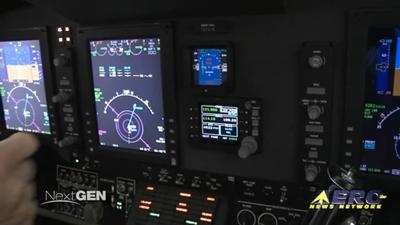Wed, Feb 22, 2017
Focuses On Adherence To Proper Test Procedures
The FAA has released a Safety Alert for Operators (SAFO) directed towards personnel involved with ground testing of aircraft Air Traffic Control (ATC) transponders and ADS-B OUT equipment. The SAFO points out the importance of adhering to proper test procedures and the hazards associated with improper testing.

The FAA has received reports of transponder and ADS-B OUT system ground test events in which information, including simulated altitude, was transmitted from the test aircraft and received by aircraft inflight. In at least one instance, an ADS-B OUT system ground test created a false airborne target that generated a Traffic Alert and Collision Avoidance System II (TCAS II) Resolution Advisory (RA) on a Boeing 737 aircraft on approach. Pilot reaction to this RA required unnecessary maneuvering in congested airspace and initiated ATC re-sequencing actions that affected multiple aircraft and negatively impacted operations in the area for about 30 minutes.
Transponders and ADS-B OUT systems operating under test conditions transmit specific information about the aircraft, including position and altitude data. These tests frequently involve a check of the aircraft’s altimetry system in which air pressure is induced into the pitot static system to simulate operation at various altitudes. In cases where transmission lines are not attached directly to test equipment, antenna shielding must be used to prevent propagation of test signals with potential to interfere with ATC operations or TCAS-equipped aircraft operating in the area.
The FAA recommends that repair stations and maintenance personnel performing transponder and ADS-B OUT system testing evaluate the adequacy of their procedures and adhere to proper test procedures to prevent uninhibited system transmission that may affect ATC operations or airborne aircraft. The FAA also recommends that applicable maintenance personnel be aware of any local requirements to alert ATC of impending testing, and to review relevant guidance contained in the latest revisions of:
AC 29-151, Airworthiness Approval of Traffic Alert and Collision Avoidance Systems (TCAS II), Versions 7.0 and 7.1 and Associated Mode S Transponders;
AC 43.6, Altitude Reporting Equipment and Transponder System Maintenance and Inspection Practices; and
AC 20-165, Airworthiness Approval of Automatic Dependent Surveillance - Broadcast OUT Systems.
(Source: FAA)
More News
Option Approach An approach requested and conducted by a pilot which will result in either a touch-and-go, missed approach, low approach, stop-and-go, or full stop landing. Pilots >[...]
"Emirates is already the world's largest Boeing 777 operator, and we are expanding our commitment to the program today with additional orders for 65 Boeing 777-9s. This is a long-t>[...]
(Pilot) Reported That There Was A Sudden And Violent Vibration Throughout The Airplane That Lasted Several Seconds Analysis: The pilot was returning to his home airport at an altit>[...]
“This recognition was evident during the TBMOPA Annual Convention, where owners and operators clearly expressed their satisfaction with our focus on customer service, and enc>[...]
Overhead Maneuver A series of predetermined maneuvers prescribed for aircraft (often in formation) for entry into the visual flight rules (VFR) traffic pattern and to proceed to a >[...]
 ANN's Daily Aero-Term (11.19.25): Option Approach
ANN's Daily Aero-Term (11.19.25): Option Approach Aero-News: Quote of the Day (11.19.25)
Aero-News: Quote of the Day (11.19.25) NTSB Final Report: Sting Sport TL-2000
NTSB Final Report: Sting Sport TL-2000 Aero-News: Quote of the Day (11.20.25)
Aero-News: Quote of the Day (11.20.25) ANN's Daily Aero-Term (11.20.25): Overhead Maneuver
ANN's Daily Aero-Term (11.20.25): Overhead Maneuver



